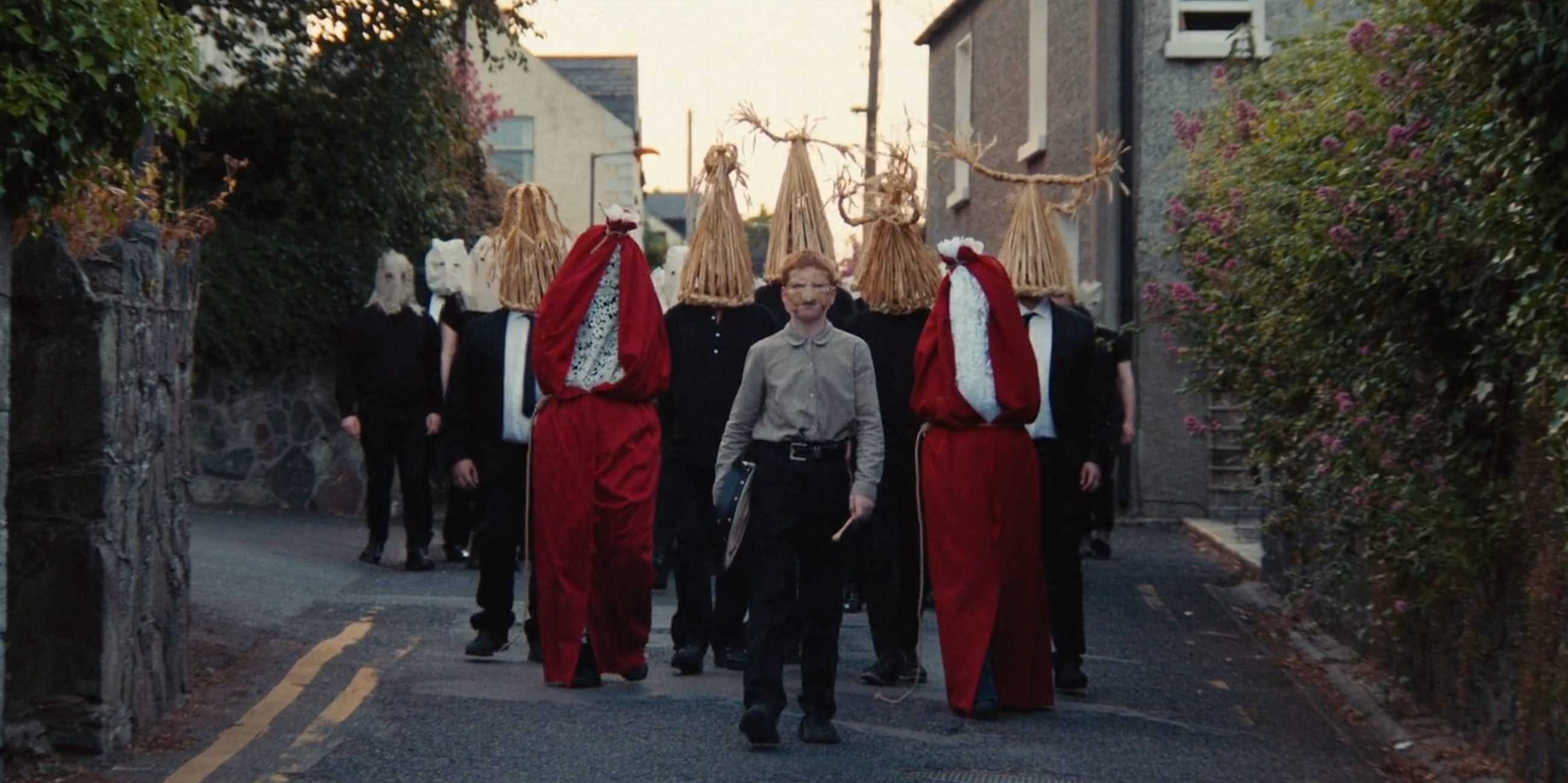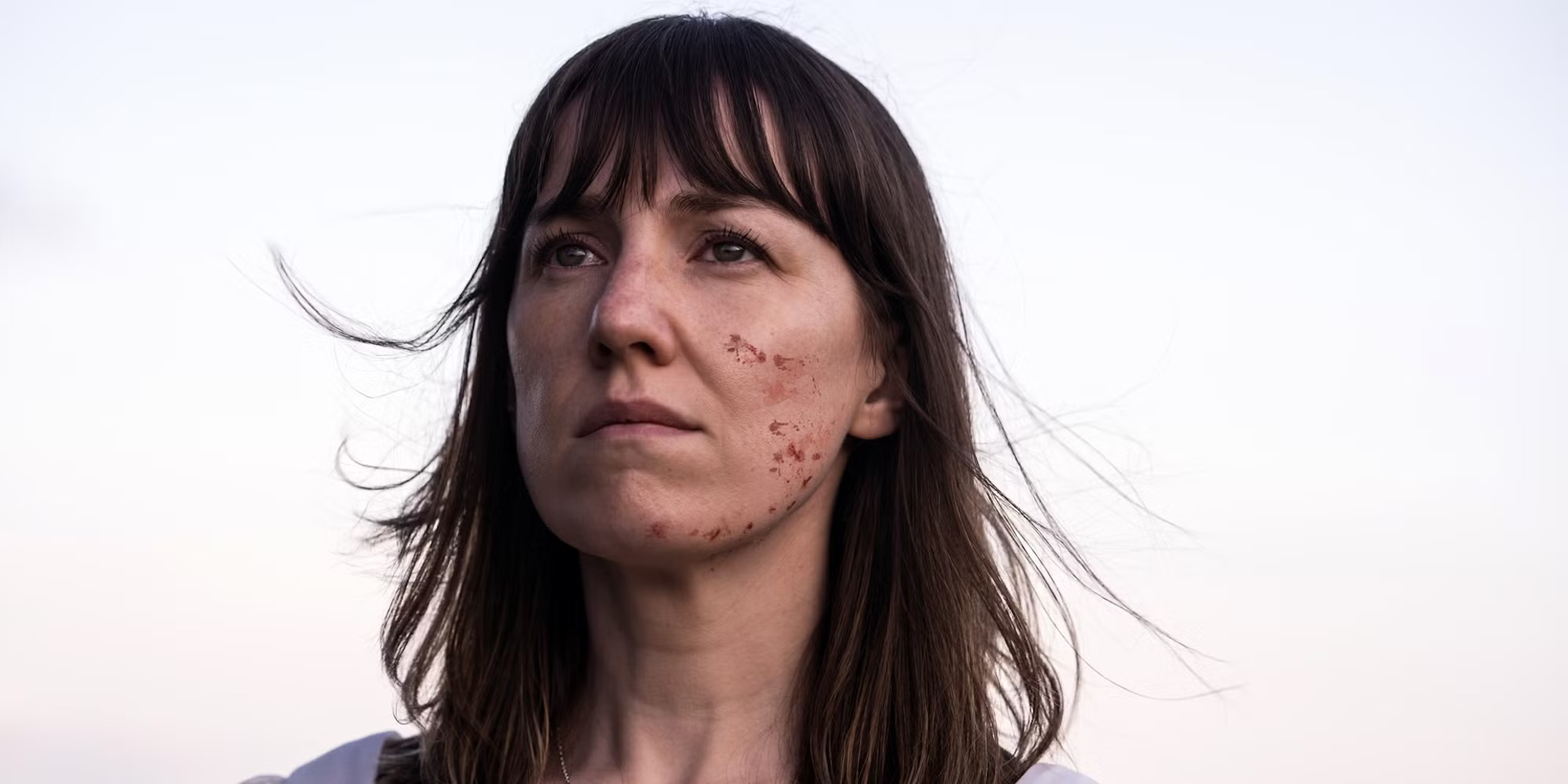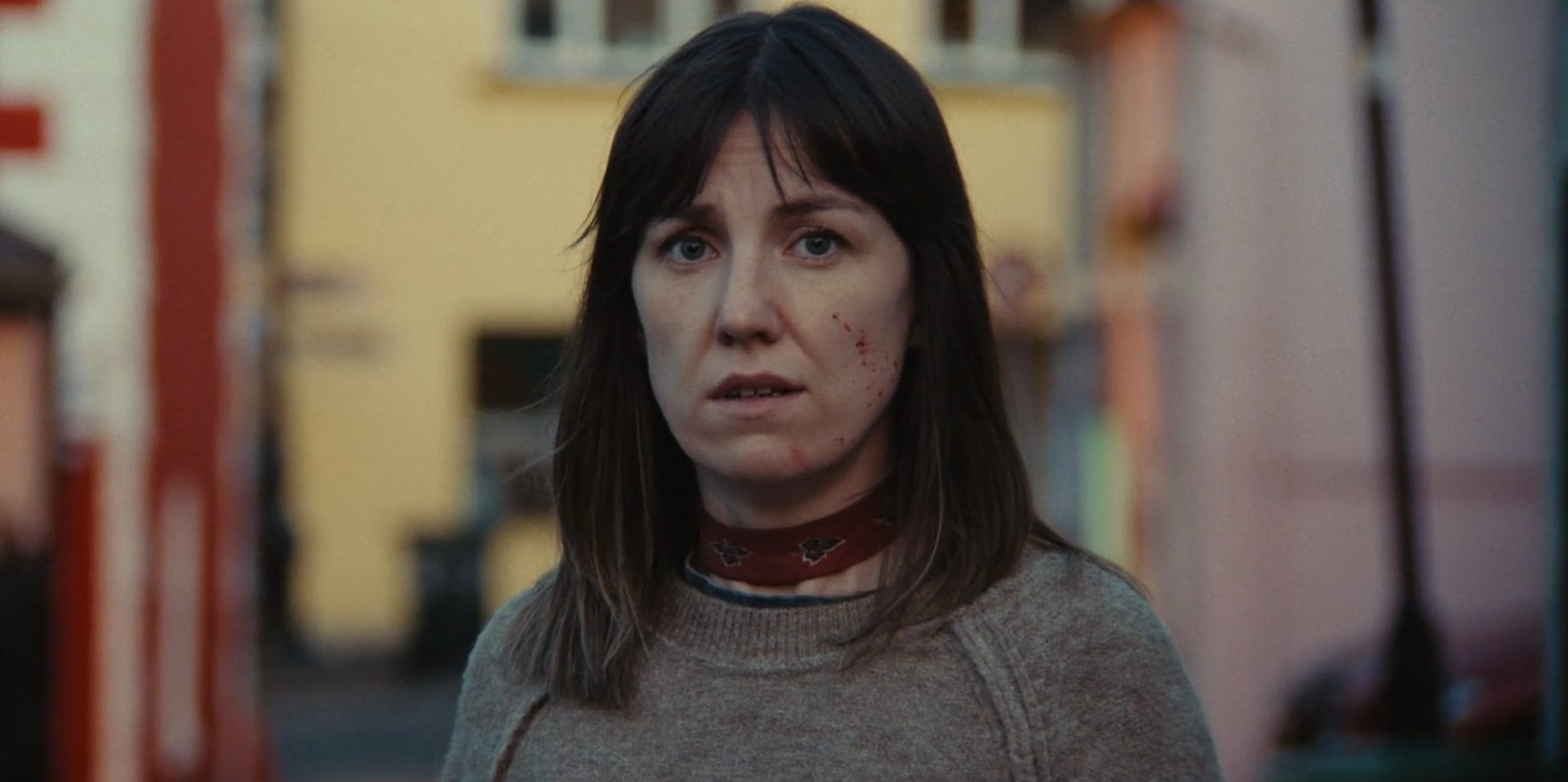Helmed by Aislinn Clarke, ‘Fréwaka‘ tells the story of Shoo, a palliative care nurse assigned to look after a troubled elderly woman named Peig, who lives on the outskirts of a remote Irish town. Soon after arriving, Shoo finds that her new patient has eccentric habits and superstitious beliefs that make no sense on a logical level, alluding to a mysterious “them” who is after her. Although initially skeptical, these paranoid thoughts filter through the protagonist’s mind, invading her own life and dredging up buried secrets from her own abusive past. Thus, the psychological horror movie is an introspective and terrifying portrayal of real traumas inflicted on people throughout history, bringing a sense of authenticity and realism into its supernaturally charged atmosphere.
Fréwaka Delves Into the Church’s Dark History With Irish Women
While largely fictional in its making, ‘Fréwaka’ takes inspiration from the real-life intersection between religion, motherhood, and trauma rooted in Ireland’s past. The movie’s name is extracted from the Irish word “fréamhacha,” which translates to roots. Aislinn Clarke penned the script by combining elements of Irish myths and folklore with her direct experiences of living in Ireland. To that end, the inheritance of trauma from one generation to another is a significant theme in the narrative, one which revolves around draconian practices in the past that infringed on people’s freedoms in inhuman ways. The movie’s creepy cult-like masked figures, who are referred to as “them” and “they” by Peig, are a horror dramatization of the terror visited upon women by the Catholic Church in Ireland.

“The influence of the church in Ireland, historically, is so heavy and overbearing and has really infiltrated every aspect of life that it’s impossible to escape,” Clarke said in an interview with The Hollywood Reporter. One of the symbols of Ireland’s stained history with the Roman Catholic Church was the running of the Magdalene Laundries, AKA Magdalene Asylums, which were exclusively created for the housing of women who had broken the rigid conventions of society. For instance, women who were unmarried pregnant, survivors of rape/incest, deemed psychologically “unstable,” among others, were taken into these asylums. These houses fell under tremendous scrutiny when the unmarked graves of 155 women were found on the premises of one of the asylums in 1993.
In the movie’s opening scene, we witness Peig being abducted by “them” on the night of her wedding. Later, the truth of the incident is revealed in greater detail, showcasing how she was taken in by “them” and tortured for a long time. Although there is a supernatural aspect to the drama, the situation touches upon the individual experience of women who had to survive the oppressive regime of the Church, including the mental, spiritual, and physical torment that took place within the laundries. Even prescient topics such as the illegal selling of children are brought up in an insidious fashion, another reference to the horrors of the past. It all creates a reflective mood, grounding the supernatural elements in a mixture of thematic truths and a terrifying atmosphere.
Fréwaka is a Story of Three Women Linked Through Cycles of Abuse
Despite bearing strong ties to history and religion, ‘Fréwaka’ mainly centers on the personal journey of three women – Shoo, Peig, and Shoo’s unnamed mother, who commits suicide in the movie’s early parts. The three have distinctly disparate journeys and inhabit different timelines. Writer-director Aislinn Clarke wanted to capture the idea of progression, which is often rooted in the Irish language itself. Because Peig is rooted in the past, she can only speak in Irish, which makes her seem more rural in comparison to Shoo, who is from the city. However, the opposite is true when stepping into the Irish-speaking parts of Ireland. Clarke explained, “I like this kind of confrontation of two things and also the fact that in rural Irish-speaking parts of Ireland you sometimes get the sense that people coming from outside can’t speak Irish, or that they’re a little bit locked down.”

Although the differences are vital in showcasing the separate values held by modern Irish folk as compared to their older rural counterparts, they also set the stage for a reconciliation of sorts. The more we progress in the story, the more we learn how Peig and Shoo are interlinked through cycles of violence, abuse, and trauma and have shared experiences. Peig claims that she is different because she survived the punishments and torture inflicted by “them.” This is visually personified through the horrific scars on her back. However, Shoo is the same because her mother abused her for not reciting her Catholic scriptures in the correct fashion, which are forever etched into her skin through cigarette burns on her forearms. It is a moment of coming together for both women.
“There is the physical inheritance of trauma, but there is also what’s given to you, what’s passed down from your parents and grandparents, also in stories and myths. So I think it’s hard to escape it. It’s ever-present, and it kind of tinges everything,” Clarke said. The shining aspect of ‘Fréwaka’ is how it masterfully intertwines religion, tradition, Irish history, and motherhood into a horror narrative that eerily peels back the layers of the true tragedies of the past. The movie is an exploration of the hurt and pain thousands went through in an effort to understand the meaning of their suffering. Therefore, it manages to engage on multiple levels, highlighting life’s ugliness and past atrocities through a metaphorical lens that feels reminiscent of reality but ultimately drawn from the writer’s imagination.
Read More: Fréwaka Ending Explained: Is Shoo Dreaming?


